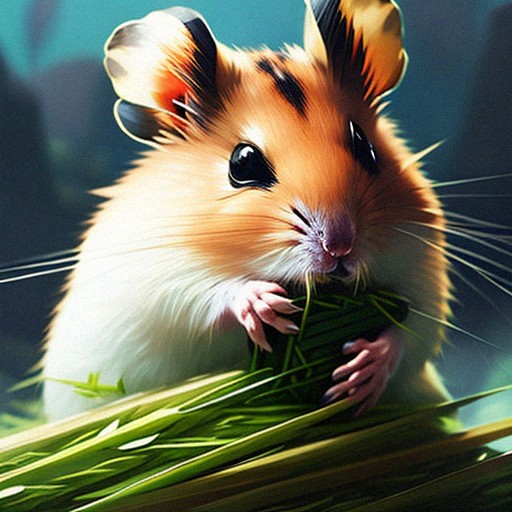Hamsters are small, fluffy creatures that are often kept as pets. Best known for their cute and cuddly appearance, but did you know that hamsters are also fierce hunters?
In the wild, hamsters are opportunistic feeders and will hunt a variety of organisms to survive. In this article, we will explore the hunting habits of hamsters and take a closer look at the organisms that they prey on.
Insects
One of the main organisms that hamsters hunt in the wild are insects. Studies have shown that insects make up a large portion of a hamster’s diet. Beetles, caterpillars, and grasshoppers being the most commonly consumed prey.
Hamsters have been observed hunting for insects in the grass and under rocks and logs. They are able to dig deep into the soil with their powerful front teeth to find insects hiding underground.
Small Mammals
Hamsters are also known to prey on small mammals, such as mice and voles. A study conducted in the wild showed that hamsters were able to catch and kill small mammals with ease. They are able to locate their prey using their keen sense of smell, and then use their sharp teeth and powerful jaws to kill them.
Reptiles and Amphibians
Hamsters are not picky eaters and will also prey on reptiles and amphibians if they come across them. Interestingly, hamsters frequently catch and eat small lizards, snakes, and frogs. This behavior is most commonly seen in the desert-dwelling species of hamsters, such as the Syrian hamster.
Birds
Hamsters are not just limited to hunting on land, they have also been observed hunting birds. A study in the wild observed hamsters hunting and eating small birds, such as sparrows, finches, and even chicks. Hamsters are able to catch birds by ambushing them from the ground or by climbing trees to hunt them.
Plant Material
While hamsters are primarily carnivorous animals, they also consume a large amount of plant material in their diet. Studies have shown that hamsters consume a variety of plants such as seeds, fruits, and roots. They are able to locate these food sources by using their sense of smell and by foraging through the grass and bushes.
Other Organisms
Hamsters are opportunistic feeders, which means that they will eat whatever food is available to them. This includes anything from bugs and worms, to spiders and snails. They are able to catch and eat a wide variety of organisms, making them one of the most versatile hunters in the animal kingdom.
Foraging Behavior
Hamsters are known for their foraging behavior, which is when they search for food in a specific area. Studies have shown that hamsters will forage for food in the same area for several days, before moving on to a new area. This behavior allows them to efficiently locate food sources, and avoid competition with other animals.
Storing Food
Hamsters are also known for their ability to store food for later. They have large cheeks that they can stuff with food, which they then carry back to their burrows. This behavior allows them to have a steady supply of food, even when food sources are scarce.
Adaptations for Hunting
Hamsters have a number of adaptations that make them excellent hunters. Their sharp front teeth and powerful jaws allow them to easily catch and kill their prey. They also have a keen sense of smell, which helps them locate food sources.
Additionally, they have strong hind legs that allow them to quickly and efficiently move around their environment, making it easier for them to catch their prey. Their small size and fluffy fur also make them excellent at hiding from predators and sneaking up on their prey.
Final Thoughts
In conclusion, hamsters are not just cute and cuddly pets, they are also fierce hunters. They prey on a wide variety of organisms, including insects, small mammals, reptiles and amphibians, birds, and even other hamsters.
Their foraging behavior, food storage abilities and hunting adaptations make them highly adaptable and efficient hunters. Next time you look at your pet hamster, remember that it is not just a cute ball of fluff, but also a skilled predator.
